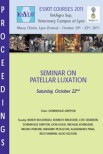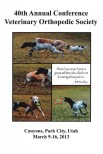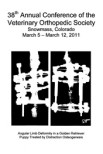To meet the needs of sport horses, horseshoes of various styles and materials have been implemented to enhance performance. Steel shoes are commonly used for their affordability and longevity; however, the use of aluminum horseshoes is being adopted to satisfy the various requirements of certain equestrian activities. Owing to the importance of the allure of movement in many aspects of competitive riding, the lightweight nature of aluminum horseshoes has been recognized to accentuate foreleg action. By performing a repeated-measures crossover study on nine healthy stock-type horses, the effects of these two horseshoe types on forelimb action were analyzed at the trot using two-dimensional kinematics. Horses were trotted in hand for three repetitions over a distance of 50.1 meters on days 4, 18, 32, and 46 postshoeing for two 6-week shoeing cycles. Video footage was collected and analyzed using gait analysis software (EquineTec) for each repetition. The measured stride length, fetlock extension, elbow and knee range of motion, and minimum and maximum elbow angle remained constant between treatments. However, there was a significant treatment effect on minimum carpal angle and maximum hoof height, with aluminum shoes having a larger minimum carpal angle than those in steel shoes (P < .05) and a lower maximum hoof height (P < .05). An overall 3-degree difference in minimum carpal angle and approximate 2.5-cm difference in maximum hoof height was observed between treatments. This finding is of particular importance to performance horse disciplines for which a lesser degree of knee action is desirable.
Effects of Steel and Aluminum Shoes on Forelimb Kinematics in Stock-Type Horses as Measured at the Trot
Date
May 2012
Journal
Journal of Equine Veterinary Science
Volume
32
Number
5
Pages
262-267









